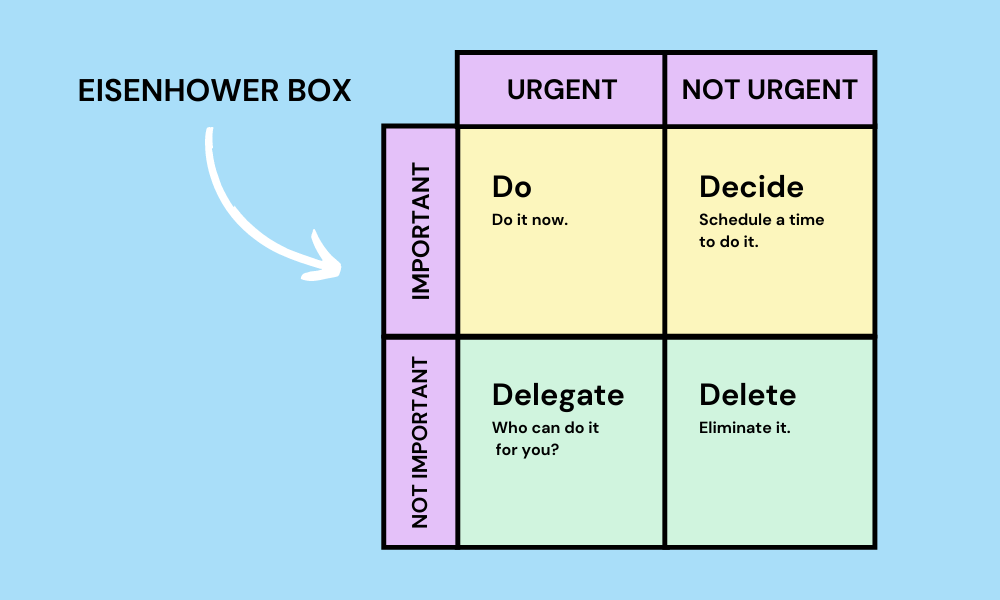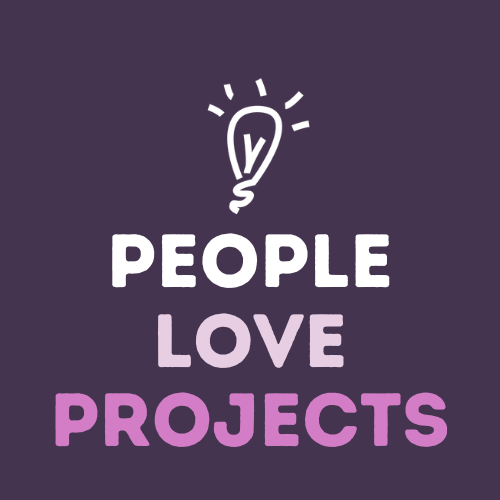The only way tangible results can take shape is to be deliberate about where you spend your time, energy and attention.
This means you must accept that:
- You choose what you do today with the time you have;
- You decide which things are worth investing yourself in and which are not; and
- You can choose to be either focused on things that matter or allow yourself to be swept away in a sea of distraction;
Of course, we can’t overlook the fact that the biggest hurdle is often choosing what to focus on in the first place.
And so I wanted to share with you a new way to think about how you decide where to spend your time and energy.
And how to get better at making confident decisions based on the direction you want your life to take.
Significance is your new measurement for making decisions
You may be familiar with the time-management matrix or the Eisenhower box for prioritizing your time. It looks like this:

This method stems from a quote attributed to Dwight D. Eisenhower:
“I have two kinds of problems, the urgent and the important. The urgent are not important, and the important are never urgent.”
And Dr. Stephen Covey, author of the bestseller The 7 Habits of Highly Effective People, popularized the system.
Essentially, it works to identify (and perhaps, defend) what tasks are important vs. urgent.
Now, I’m sure President Eisenhower got some great work done. And I’m a massive fan of Covey and his book. But it’s not enough to define what’s important and urgent, and you’ll magically know what to do.
To make a fully-formed decision, we need to introduce another axis:
Significance.
This is an idea I swiped from author Rory Vaden. He says:
If urgency is “how soon does this matter?” and importance is “how much does this matter?” then significance is “how long will this matter?”
And he calls this three-dimensional thinking.
Activating 3D Thinking: How long will this matter?
The idea here is to address how your actions now impact your future.
So rather than simply learning to manage or prioritize your time better, you learn to think in terms of multiplying it.
You see, as Rory puts it:
“Managing your time” is simply doing things fast and efficiently to try and squeeze more into whatever time you have available. This is one-dimensional thinking.
“Prioritizing your time” is using the urgent and important grid to borrow time from one area of your life to focus instead on another. This is two-dimensional thinking.
What we want to move into is three-dimensional thinking, where we add in the calculation of significance.
For instance, let’s say you’re a service-based business owner with the need and vision to free up more time. So you want to add in some automation to alleviate some of the work you do upfront with clients.
Now let’s say you have two choices on how to spend your time today:
- Create an automated onboarding sequence for all new clients.
- Spend time providing excellent service to your latest new client personally.
Both are important.
And if you only include the urgency calculation, then it’s obvious that you would choose option two and spend some time providing exceptional service personally.
But if you include the significance calculation…
You realize that you should give a great deal of consideration to working on your onboarding sequence first.
One decision is not necessarily better or worse than the other. But when you add this new element of consideration to your thinking — the idea of significance — it instantly has an emotional effect on which option you choose.
And if you filter all your decisions and daily activities through that lens of significance — and ask the question:
What is the next thing I can do that is going to truly make a critical impact?
Then you can be assured you’ll be making progress towards a meaningful, intentional result.
Rather than feeling like you’re busy but not making any measurable progress.
And, as you factor in a calculation for significance, it begins to offset some of the weight and pull of urgency. Which helps you make wiser, long-term choices.
So how do we go about translating 3D thinking into our work?
Things like creating routines and rituals, leveraging processes and frameworks, and developing new habits all make tomorrow easier.
As do finding and using tools that help you concentrate.
(Because we both know the damage distraction can cause.)
For instance, Personal Kanban does an excellent job of helping you visualize your big picture strategy and connect it with what you do every day.
By activating 3D thinking, you can shift into that long-term perspective that allows you to temporarily sacrifice the urgent tasks and begin to make time investments today that have more positive effects on tomorrow.
In other words, when you’re focused on multiplying your time, the choices you make now create more space for you later.
You are creating more margin in your life and freeing up your time in the future.
Does your work achieve results?
If we think about true productivity as the kind that increases your income and allows for more freedom, then it’s not about getting more things done; it’s about getting the right things done.
Of course, what’s “right” looks different for you than it does for me.
But, there is a clear distinction we can make, and that is between income-producing activities and busywork:
Income-producing activities
These are things that add direct value and help you achieve your goals. They drive income and faster progress. They redeem your time or multiply it. This is the work that connects directly with your vision and the lifestyle you want.
Think: creating content, making sales calls, creating systems and automation, building relationships.
Busy work
Stuff like admin tasks, meetings, email signatures, logos, and endless website tweaks — shallow work that fails to drive revenue or results for you or your business.
It’s not to say these things aren’t necessary, but I’d question your approach if this is where you focus your energy during your “best work” hours.
The Next Step: Reflect and revise
I want you to consider the last week or so of work you’ve done, and either in your head right now or on a list a bit later on, note where you spent the majority of your time, energy, and attention.
Did you feel the heavy burden of busy work and the pull of distractions during your days? Or can you see flashes of flow states, deep work, and discipline?
If you like, pose the following questions to yourself and do some free-hand journaling of your answers. Here are the prompts:
- What went well last week and why?
- What can I do next week to maximize my income-producing activities?
- What can I do to reduce “in the moment” decisions and be more deliberate with my actions every day?
Think about how your current situation is serving you and what it might look like if you made a few tweaks to how you manage yourself and make decisions about priorities.



